Civil War: A Movie Review
A terrific cultural warning flare that shocks & awes — then subsides to straightforward reason, affection, and concern

Civil War opens with a fictional US President (Nick Offerman) rehearsing moments before delivering a national address, trying to find the right phrasing and tone to reframe a bloody civil war nearing ugly conclusion as the greatest victory in the history of mankind.
The rhetoric is dialled down in his live address, but the viewer can quickly surmise he is a generic “conman in chief” type of leader, embodying familiar traits of populism in the “post-truth” era.
This role has minimal screen time, and is not played as a simple satire of Donald Trump. Offerman plays the role as a character of his own Thespian devising, mannerisms, and expression. A politician with traits relevant to the story’s scenario. There’s a natural overlap with Trump, instructed by some of the things we’ve heard from him, or that he would like to do. I think that’s unavoidable. If there wasn’t, the script would be avoiding comparison to reality to the point of being dishonest about the kinds of threats that make its story relevant to tell now.
I think the movie has quite a keen disinterest in making its audience think about any individual politician, and it puts many cultural elements in its crosshairs. Even more so, this is not a story about Republicans and Democrats, or good side versus bad side.
As the title seems to emphasise, it’s a movie about the state and reality of civil war itself. It’s also a stunning, hard-hitting cinematic vision that entertains, provokes thought and feeling, and contains a deep affection both for the values shown under destruction and those trying to do something meaningful within the chaos.
Although it’s a movie with shock power, the only buttons pushed are the shutter releases on the cameras of the photojournalists we follow. Pushed in fear, bewilderment, anger, intrigue, artistic reflection, sometimes over-enthusiasm — but with an adreneline-boosted desire to understand the truth of what is going on, and share it with the public. Pushed to find meaning in chaos, with the hope that has inherent value.

A state of civil war has broken out in the US. For unknown reasons, the politically distinct States of California and Texas (known as the “Western Forces”) have seceded from the Union and joined forces to overthrow the government. The government has walled itself in around Washington DC and is conducting a bloody military campaign. Airstrikes on citizens and journalists treated as enemy combatants is the order of the day.
The Western Forces are trailing a bloody path to the White House, carrying out their own atrocities that include civilians, and apparently possess no clear post-victory plan or clarity of the ideology that unites them.
The national moral compass is lost on both sides, leaving a brutal reality to work through, divorced from cause. Civil unrest in some quarters is juxtaposed with a stubborn political disinterest in others. Some are taking to the streets in acts of protest, and others are trying to create bubbles to live inside and ignore the war.
It’s, well, yeah… a powerful and well-imagined portrayal of what a civil war under similar circumstances could look like.
This result, the war-torn reality of a future moment, is where the story’s focus remains locked. The specific events that cause Texas and California to secede from the Union are not detailed, though we are given snippets to get a basic picture (we know that POTUS found a way of extending Presidency into a third term, before the outbreak of war).
The story adopts a modernised “journey down the river” plot in the tradition of Joseph Conrad’s Heart of Darkness, or its superlative cinematic adaptation, Apocalypse Now (1979) — and there’s a few well-chosen references to that movie, too.
Instead of soldiers in a boat, we follow journalists in a press van; destination: The White House. Which, from what we hear, is something akin to a modern equivalent of Colonel Kurtz staked out in the Cambodian jungle, surrounded by a small army of dedicated worshippers and decapitated heads. For journalists to travel there and attempt to interview the President is essentially a suicide mission, we are told. They are shot on sight.
Title cards counting down “miles to Washington” keep the beat as the journalists are swept into the thick of things, encoutering situations that vary in their forms of madness, though none escape the omnipresent threat of violence. The action heats to a boil from what feels like, from the start, the boiling point — a tense, spitirually fatiguing, bloody and dangerous situation.
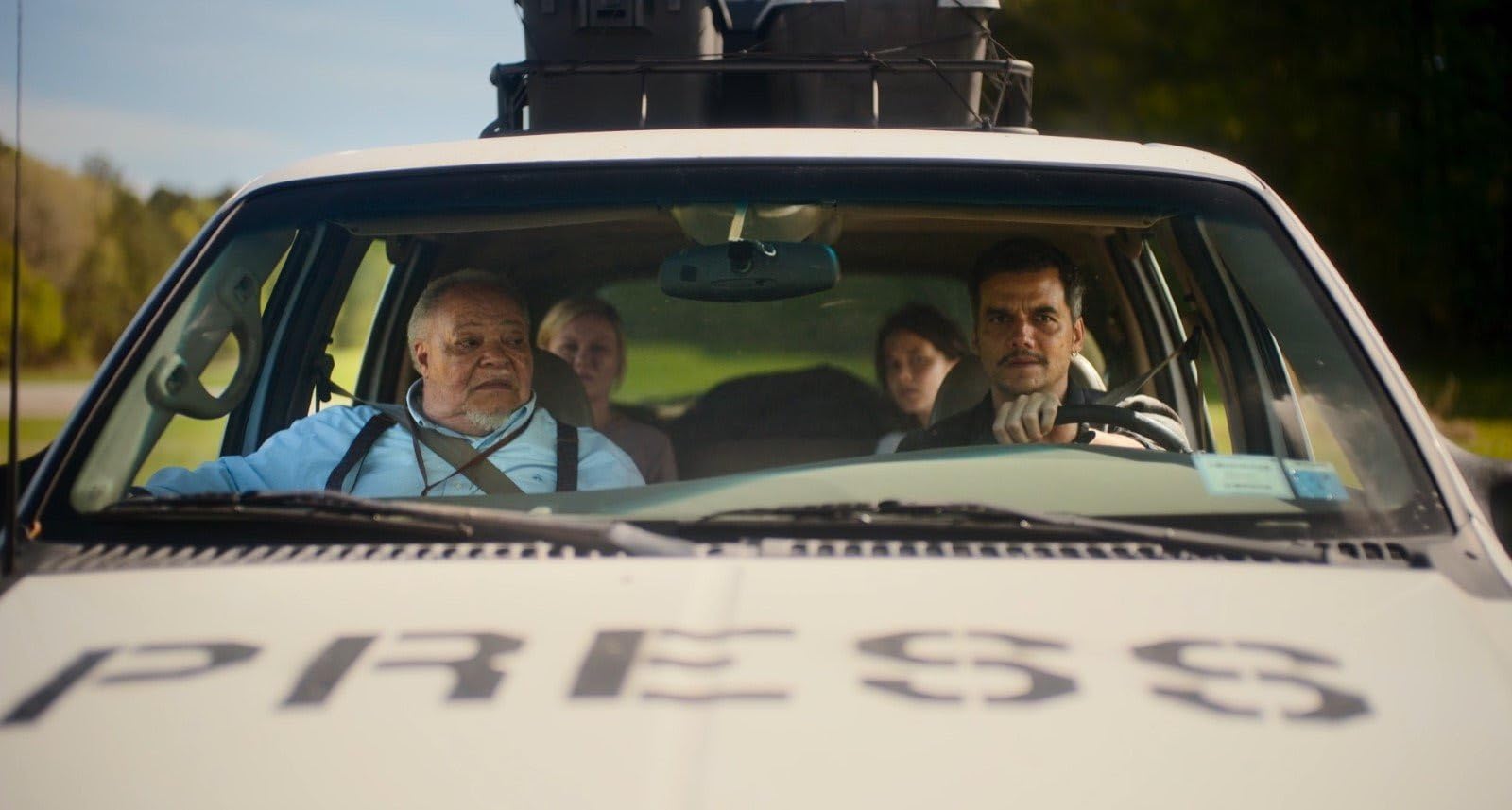
This is a road trip movie as well as a war film. The van the main characters travel to Washington D.C. in, “PRESS” emblazoned on all sides, projects just enough of a protective force field to allow them to make it more than, say, a few miles (which one scene highlights quite pointedly). The four war journalists bond there, and everything that happens in the van, to the van, and with the van gives the story an oddly comforting sense of place and narrative anchoring.
That the two photojournalists among the group shoot still images — and the younger, aspiring journalist works with film, which she develops on the go using a makeshift photo lab — is in itself an interesting throwback to a former era of journalism. A time when they commanded more trust and respect from the public, in turn allowing them to function in a more valuable role.
Some of the images captured flash up on screen in the moment they are shot, in quiet moments and during heavy action, in a rhythmic way. The technique is poignant and arresting. It prompts reflection on what is being recorded — in the moment, in history.
The movie portrays civil war as the logical end of extreme political polarization with a straightforward sincerity and, through war-torn and weary eyes, there’s a deep affection for the best qualities of the nation, the people, and the values being lost by a conflict spun out of control. Part of the story’s message feels very simple: “no, really — this can happen in the US, too. We are all in the same soup.”
An unashamed admiration for the best causes of journalism shines though in quite a refreshing and welcome way. The journalists who are willing to put themselves in all kinds of danger just to capture a clear picture from outside the official channels of government, and send it back home to the public. Which is a bit like a cat morbidly dropping a dead bird on the threshold, but if dead birds were of life-sustaining value to human cat owners (which I assume is what cats do believe, but I digress…).
Memorable scenes are stacked like pancakes. The movie feels like a videogame, road trip movie, brutal war film, wistful place of cultural reflection, love letter to photojournalism, and love letter to the American Dream, of the complex and nuanced beauty contained in that messy concept. Photographically it is excellent, with a number of shots that sear into the mind. Most of those do not involve moments of heavy action or violence.
There’s a subliminal background hum in between the explosions, of the poignancy of something beautiful being lost. Everyone knows it, though they are reacting in very different, usually destructive and violent, ways. The story has an apocalyptic subject matter, but the cinematic heart of gold is in full effect. We glean the underlying love of the story largely through simple interactions of few words between the four leads, in the brief quiet moments.
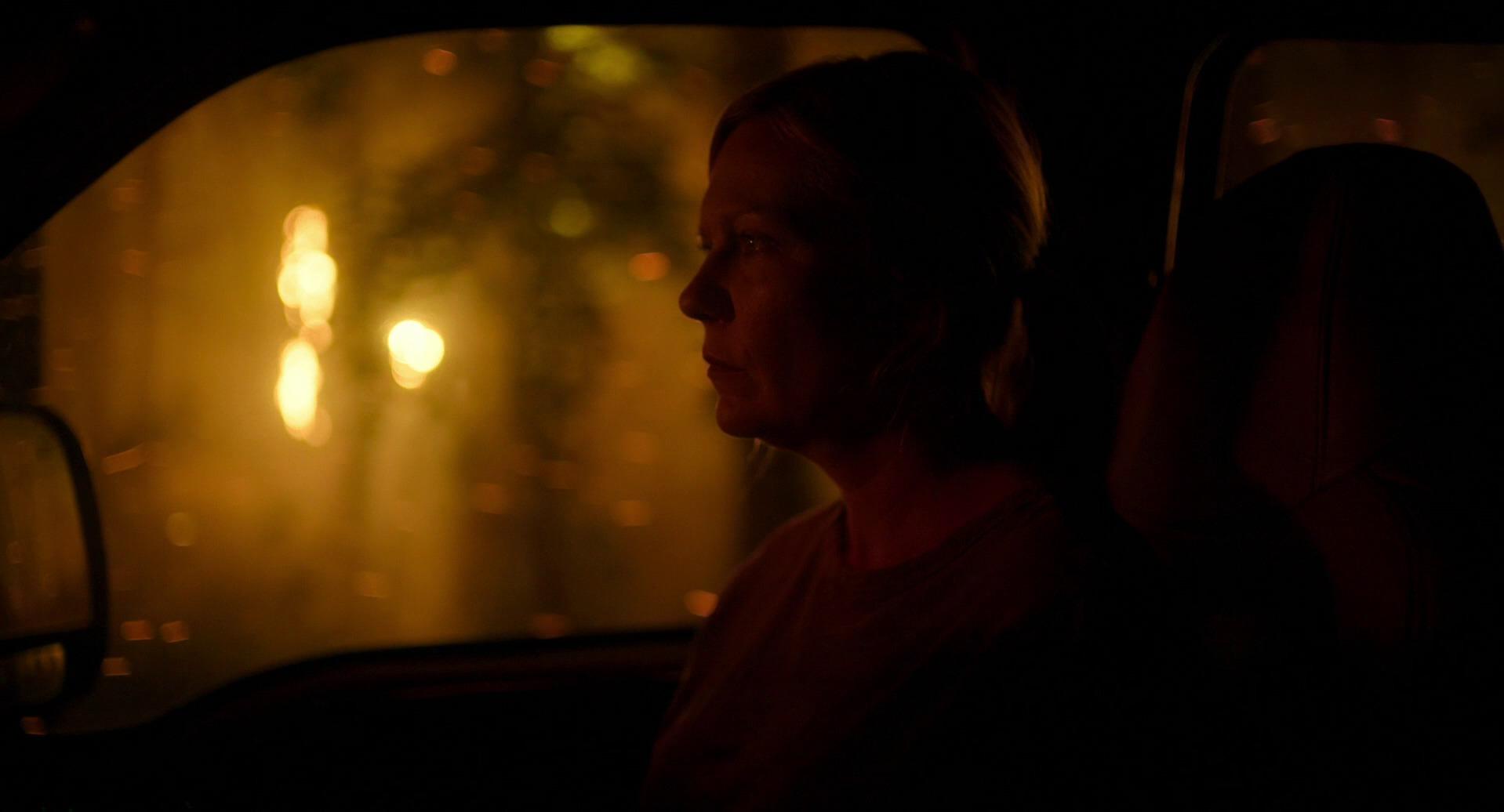
Kirsten Dunst is perfect in the lead role, as an experienced, weary and war-worn photojournalist of national acclaim. It might be my favourite performance of hers, and she has starred and powered movies that often have a place on all-time lists (Eternal Sunshine of The Spotless Mind, Melancholia).

Cailee Spaeny, following a superb lead role performance in Priscilla (2023), shows impressive range stepping into the shoes of a young, scrappy photojournalist trying to make a break in the field. She defiantly models herself after Dunst’s character, who has very mixed feelings about what it took from her to get to the top, and the onscreen chemistry between them is great.
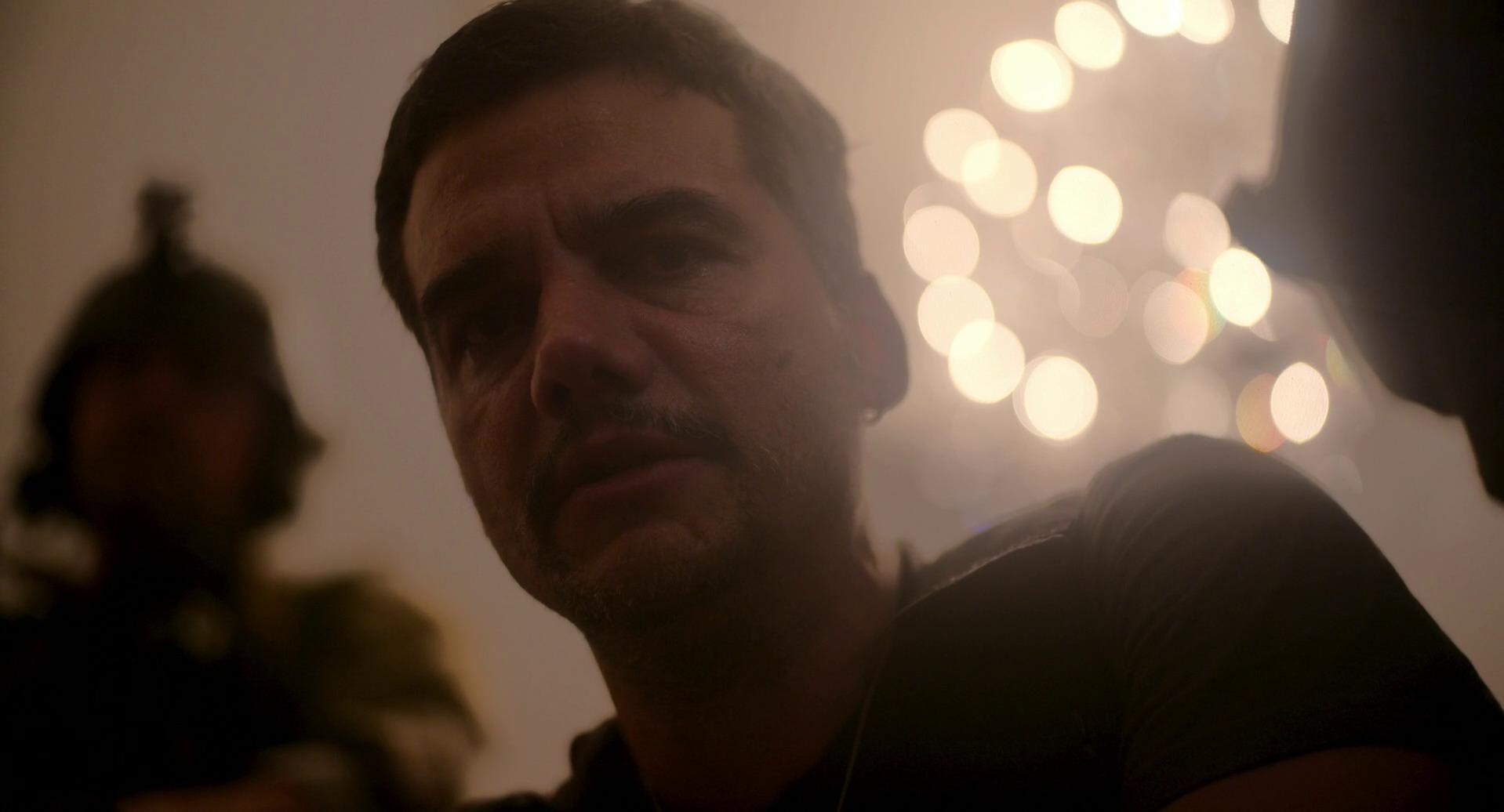
Wagner Moura’s role adds levity, hot headedness, and a sprinkling of minor asshole energy and sleaze. His character adds a crucial ingredient of contrast and lightheartedness to the group chemistry, tilting scenes emotionally, and towards laughs in choice moments. He plays the part with wit, humour, and passion.
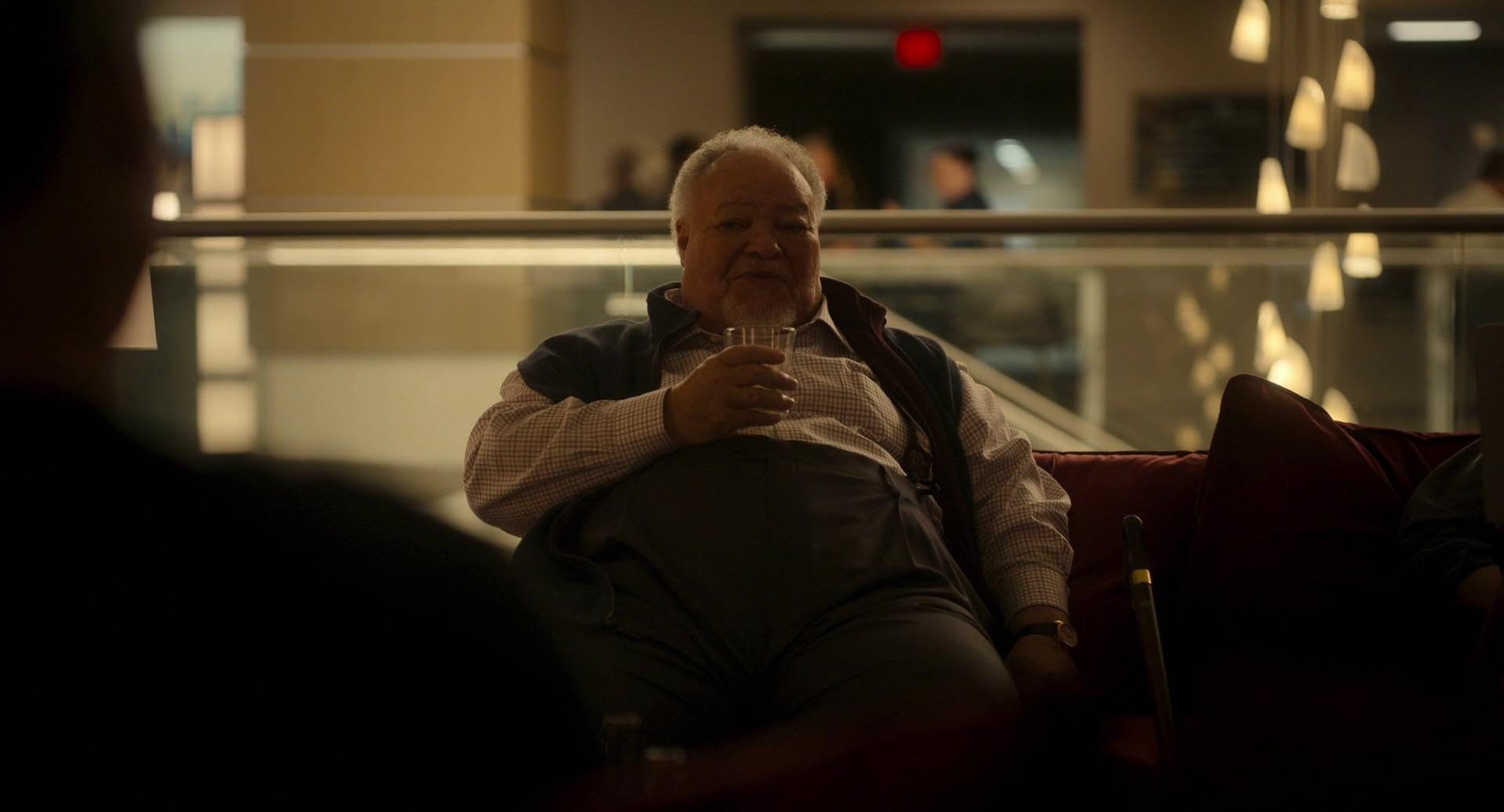
Stephen McKinley Henderson plays a loveable representative of the journalistic old guard, a cynical survivor of decades on the front lines. Sure of the value he still has to offer, and willing himself to get fully involved as his body, and everyone around him, try to tell him "no." A wily old fox who expertly embodies the wisdom of experience. There's a lot written into his character in the relatively measured screen time he has, and it's a superb performance.
Smaller roles leave big impressions, too.
Nick Offerman creates a distinct but fitting characterisation of a corrupt and self-interested POTUS. He walks a tightrope of embodying traits evident in politicians like Donald Trump while putting a characterisation of his own on screen, and does that well.
Jesse Plemons is jaw-dropping in a short but unforgettable role, as a Western Forces combatant on an unknown assignment. That he was cast as a last-minute replacement for the scene he features in is remarkable; it’s destined to be a highlight of his career.

Karl Glusman and Jin Ha appear in small roles in one of the film’s other highly memorable scenes (there’s quite a few), engaging a sniper from an abandoned winter wonderland left standing in mid-summer. If you drop the acid-soaked, Playboy-reading marines of Apocalypse Now into the present, and make them millenials raised on video games, MDMA-infused music, and social media, this is what it would look like. They render an image audiences have never seen before perfectly.
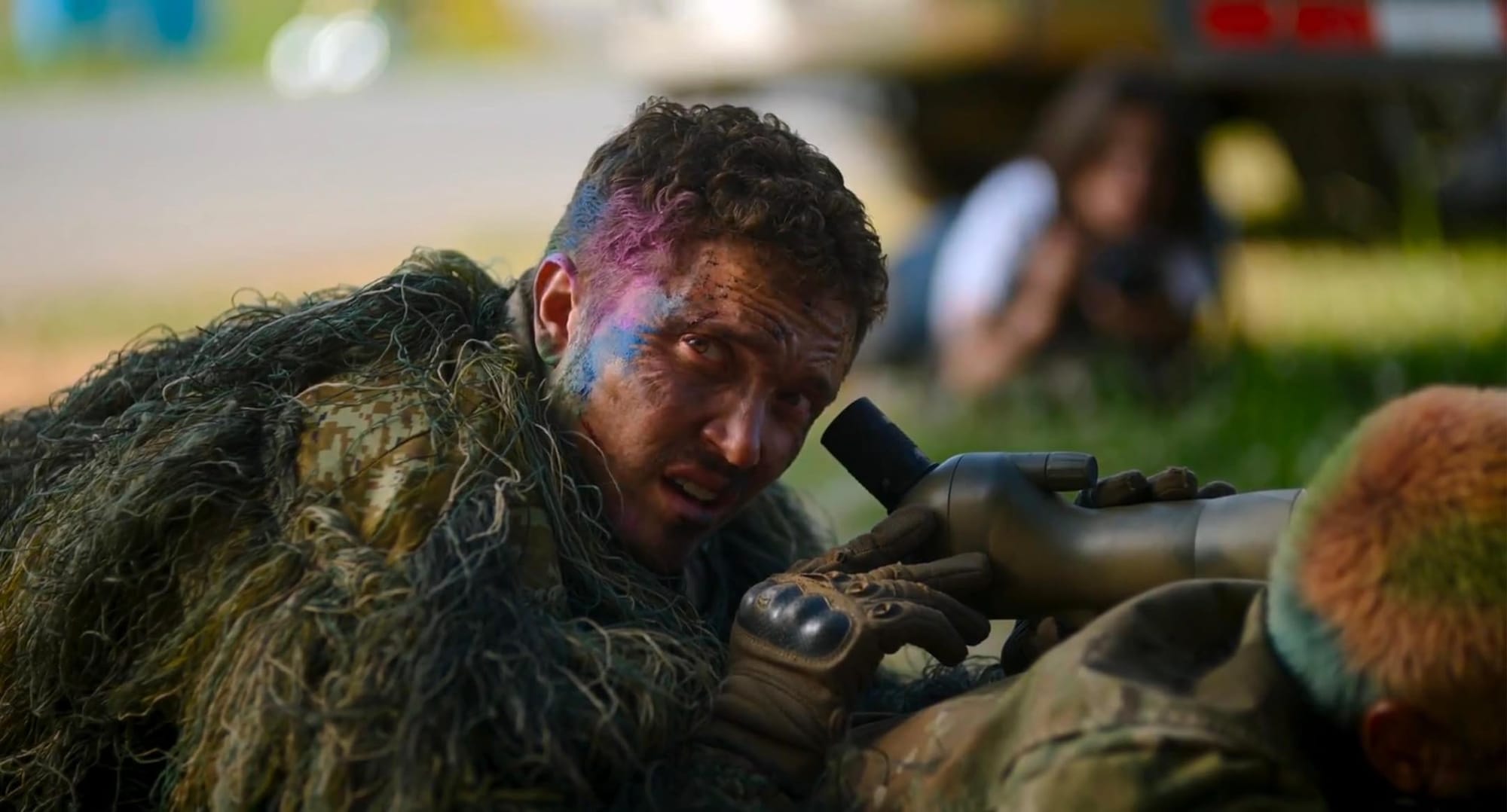
I have been a fan of Alex Garland since reading his debut (The Beach — one of my favourite novels) in the mid 1990s. He has always used his art to send up warning flares about dangers he sees, since his debut cautioned Gen Xers with romantic ideas of traveling to exotic corners of the world to live in tropical paradises, based on naive notions of endless adventure in isolation from the locals who make their living in life-or-death ways there. And not to mention, the ways human nature can turn on itself under certain conditions.
In that sense, Civil War is probably the most Alex Garland thing he has ever done. It might also be his best work across mediums.
Of the warnings sounded by Garland through his art over the years, it feels like this one is capturing attention at the right time. His stories can often be ahead of their time by several years, such as Ex Machina (2014) warning of advanced AI springing from the present culture of Silicon Valley.
The shooting of Civil War was delayed by two years due to the pandemic, which might have helped it land in a more timely way, months before a US election that so far looks something like 2016 with all the Batshit Crazy knobs turned up to 11.
It would be inaccurate to say this is an apolitical movie. It’s as apolitical as it can be, but politics is at the heart of things despite its focus being on a societal outcome. The journalists we follow see atrocities around them from both sides, and are equally comfortable lambasting the deeply self-interested President and what he has done to the country, or the ideologically confused and trigger-happy Western Forces blasting a path to the White House without a long-term plan.
Their motive is to put themselves in the thick of it, capture a good picture of what is going on, and trust that whatever truth they capture will serve a good purpose. Which, the movie suggests, requires the public to bring something to the table, too. To play their part in a decent and reasonable way.
To quote a line from Full Metal Jacket, “it’s a big shit sandwich, and we’re all going to have to take a bite.” That’s the vantage point Civil War creates. Showing a potential outcome for what it is, and exploring what it might look like, to reflect on the present from a fictional future.
And, this is simply a damn good post-apocalypse movie. Something akin to 28 Days Later without the zombies metaphor. I guess, the end of this movie might start a clock counting where, 28 days later, we might expect something like the UK shown in that modern zombie classic.
That’s another question the story prompts the viewer to ask, once the shock wears off: what does happen in the days and months after the plot of this story ends? We see enough to know no post-revolution utopia is awaiting.
It’s a provocative and engaging war film, journalistic thriller, dystopian road trip movie, post-apocalyptic social commentary, and love letter to the values of liberal democracy and the goals shared by the best journalists on the front-lines of the “culture wars,” trying to make sense out of the thing.
Incidentally: add this one to the list of notable directors making “love letter” movies in recent years. A trend that has fascinated me the more I see it continue. Alex Garland has also suggested this may be his last movie.
The writing, photography, and acting are all great. The world-building is impressively detailed, and the story is compelling.
One to go see. And I would recommend not to avoid out of reservations it will hit political notes you have heard struck loudly so many times already over the last few years. It doesn’t. Though, it does hit hard — before the underlying tone and message shines through brighter.
James Lanternman writes movie reviews, essays, and moonlit thoughts. You can reach him at [email protected].
Previously… Robot Dreams: A Movie Review
